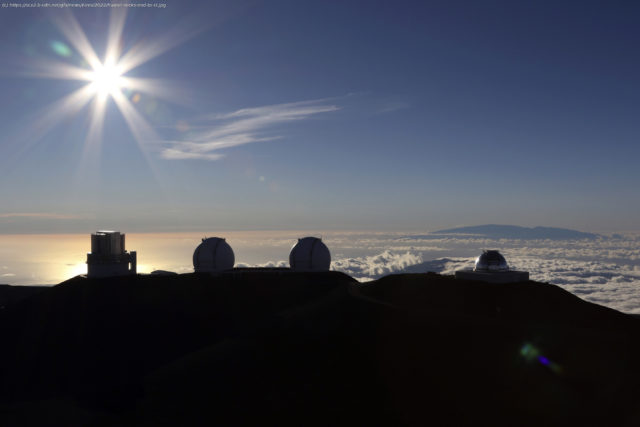For more than 50 years, telescopes and the needs of astronomers have dominated the summit of Mauna Kea, a mountain sacred to Native Hawaiians that’s also one of the finest places in the world to study the night sky.
August 20, 2022
For more than 50 years, telescopes and the needs of astronomers have dominated the summit of Mauna Kea, a mountain sacred to Native Hawaiians that’s also one of the finest places in the world to study the night sky.
That’s now changing with a new state law saying Mauna Kea must be protected for future generations and that science must be balanced with culture and the environment. Native Hawaiian cultural experts will have voting seats on a new governing body, instead of merely advising the summit’s managers as they do now.
The shift comes after thousands of protesters camped on the mountain three years ago to block the construction of a state-of-the-art observatory, jolting policymakers and astronomers into realizing the status quo had to change.
There’s a lot at stake: Native Hawaiian advocates want to protect a site of great spiritual importance. Astronomers hope they’ll be able to renew leases for state land underneath their observatories, due to expire in 11 years, and continue making revolutionary scientific discoveries for decades to come. Business and political leaders are eager for astronomy to support well-paying jobs in a state that has long struggled to diversify its tourism-dependent economy.
To top if off, the new authority may offer a first-in-the-world test case for whether astronomers can find a way to respectfully and responsibly study the universe from Indigenous and culturally significant lands.
« We’ve been here for centuries. We are not gone; we are still here. And we have knowledge that would produce a feasible management solution that would be more inclusive, » said Shane Palacat-Nelson, a Native Hawaiian who helped draft a report that laid the foundation for the new law.
At issue is the summit of Mauna Kea, which sits 13,803 feet (4,207 meters) above sea level. In 1968, the state gave the University of Hawaii a 65-year lease for land that the school subleases to leading global research institutions in exchange for a share of observation time.
Astronomers like Mauna Kea’s summit because its clear skies, dry air and limited light pollution make it the best place to study space from the Northern Hemisphere. Its dozen huge telescopes have played key roles in advancing humanity’s understanding of the universe, including making some of the first images of planets outside our solar system. Astronomer Andrea Ghez used one to prove the existence of a supermassive black hole at the center of our galaxy, for which she shared the 2020 Nobel Prize in physics.
But the telescopes have also changed the summit landscape and have increasingly upset Native Hawaiians who view the place as sacred. The 2019 protests by people calling themselves « kia’i, » or protectors of the mountain, were aimed at stopping the construction of the biggest and most advanced observatory yet: the $2.






